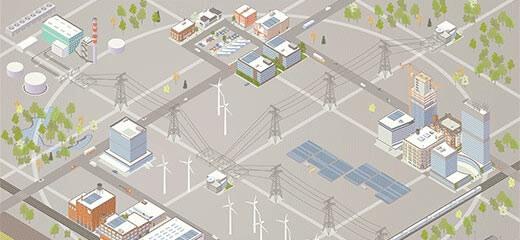Revitalizing New York’s Electric Grid: A Strategic Imperative for a Sustainable Future
Addressing the Critical Challenges of an Aging Power Network
New York’s electric grid is increasingly strained by outdated components and surging energy consumption. The escalating impacts of climate change—manifested through more frequent and severe storms, heatwaves, and flooding—have exposed significant weaknesses in the current infrastructure, leading to recurrent blackouts that disrupt essential services and daily life. These interruptions not only threaten public safety but also impose substantial economic costs, affecting everything from healthcare facilities to businesses and households.
To fortify the grid against these pressures, New York must prioritize comprehensive upgrades that enhance durability and adaptability. This involves deploying advanced smart grid technologies, modernizing transformers and substations, and incorporating distributed energy resources such as solar panels and battery storage systems. These improvements will collectively boost the grid’s resilience and operational flexibility.
- Infrastructure engineered to endure extreme weather and temperature fluctuations
- Implementation of real-time monitoring tools and rapid fault detection mechanisms
- Energy efficiency enhancements aimed at alleviating peak demand stress
- Robust cybersecurity measures to safeguard critical grid components from cyber threats
| Existing Challenge | Consequences | Recommended Solution |
|---|---|---|
| Transformer overloads | Frequent outages and equipment failures | Deploy high-capacity, intelligent transformers |
| Absence of real-time operational data | Slower response to outages | Install advanced sensors coupled with AI analytics |
| Manual grid control processes | Suboptimal energy distribution | Automate operations using IoT-enabled devices |
Leveraging Renewable Energy for a Robust and Eco-Friendly Grid
Incorporating renewable energy sources into New York’s power system is essential for building a grid that is both resilient and environmentally responsible. By expanding the portfolio to include solar, wind, and hydropower, the state can reduce its dependence on vulnerable centralized power plants and fossil fuels. This diversification not only lowers greenhouse gas emissions but also fosters a decentralized energy model, enabling localized generation and consumption that enhances grid stability during disruptions.
Effectively managing the intermittent nature of renewables requires cutting-edge technologies such as smart grid platforms and energy storage solutions. These tools facilitate real-time system monitoring and dynamic load management, ensuring consistent power delivery. The benefits of this transition include:
- Enhanced reliability: Automated fault detection and rerouting minimize downtime.
- Environmental stewardship: Significant reductions in carbon footprint combat climate change.
- Economic revitalization: Growth in clean energy jobs stimulates local economies.
- Energy autonomy: Reduced reliance on imported fuels strengthens energy security.
| Renewable Source | Installed Capacity (MW) | Contribution to Grid |
|---|---|---|
| Solar | 2,800 | Alleviates peak electricity demand during daytime |
| Wind | 3,200 | Provides steady power during nighttime and low solar periods |
| Hydropower | 1,300 | Assists in grid frequency regulation and balancing |
Smart Technologies: Revolutionizing Grid Management and Efficiency
Emerging smart technologies are transforming New York’s electric grid by enabling operators to monitor and adjust energy flows with remarkable accuracy and speed. The integration of Internet of Things (IoT) devices and sophisticated data analytics allows for proactive fault detection, minimizing outages before they escalate. These intelligent systems optimize energy distribution, reducing waste and ensuring that generated power is utilized effectively.
Key advantages of adopting smart grid technologies include:
- Increased grid resilience: Predictive maintenance and swift fault isolation reduce downtime.
- Dynamic load management: Balances supply and demand in real time to prevent overloads.
- Seamless renewable integration: Manages variable energy inputs from solar and wind sources efficiently.
- Consumer empowerment: Provides transparent, real-time energy usage data and accurate billing.
Moreover, the availability of granular, real-time data supports smarter urban planning and guides targeted infrastructure investments, laying the foundation for a reliable and sustainable energy future in New York.
Driving Grid Modernization Through Policy Innovation and Collaborative Partnerships
The transformation of New York’s electric grid into a resilient and adaptive system depends heavily on progressive policy reforms and robust public-private collaborations. The state must implement regulatory frameworks that encourage technological innovation while ensuring equitable access to clean energy solutions. Establishing adaptable standards for emerging technologies—such as smart meters, grid-scale energy storage, and distributed generation—is vital to this effort.
Fostering partnerships between government entities and private sector innovators accelerates the deployment of advanced infrastructure capable of meeting modern energy demands. Key collaborative focus areas include:
- Creative financing models to support large-scale grid enhancements
- Data-sharing protocols that enable real-time grid optimization
- Joint research initiatives targeting renewable energy integration and grid resilience
- Community engagement programs promoting transparency and inclusivity
| Collaboration Model | Main Advantage | Anticipated Result |
|---|---|---|
| Innovation Labs | Accelerated testing of new technologies | Quicker adoption of cutting-edge solutions |
| Co-funding Initiatives | Shared financial risk | Broader infrastructure deployment |
| Policy Advisory Groups | Evidence-based policymaking | Flexible and responsive regulatory environment |
Conclusion: Securing New York’s Energy Future Through Innovation and Commitment
Confronted with intensifying climate threats and rising energy needs, New York’s imperative to modernize its electric grid is clear and urgent. The state’s ability to provide reliable, sustainable power hinges on decisive investments in advanced infrastructure and forward-looking policies. Failure to act swiftly risks undermining public safety, economic resilience, and environmental progress. By embracing innovation and fostering collaboration, New York can build a future-proof energy system that lights up communities securely and sustainably for generations to come.













